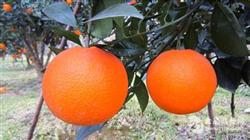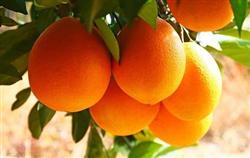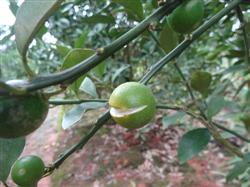Cultivation Techniques of Navel Orange Variety--Late Navel Orange

1. Adaptability and cultivation suitable area: adaptability is wide, navel orange can be planted in China, but the yield is low or unstable after planting. two。 Key points of cultivation techniques and matters needing attention: (1) suitable rootstock and reasonable planting: in acidic and neutral soil, Fructus Aurantii rootstock can be used; but in alkaline, red orange or Ziyang orange should be used as rootstock. Strong seedlings are planted with a height of more than 60 cm, a stem diameter of more than 0.8 cm and 3 or more branches. The planting density is generally 3 meters between plants and 4 meters between rows, that is, 56 plants per mu. (2) increase the application of fertilizer: mainly organic fertilizer, supplemented by chemical fertilizer. In the first, second and third years after planting, young trees are mainly promoted to shoot in spring, summer and autumn, and should be applied frequently, mainly nitrogen. In the early stage of the result, the amount of fertilizer application should be increased and the times of fertilization should be reduced. Timely irrigation: flowering and young fruit stage are very sensitive to high temperature and drought, lack of water will cause a large number of young fruit shedding. (3) to protect flowers and fruits and promote a good harvest: before the first physiological fruit drop, the fruit was coated with 200 mg / L cytokinin and 100 mg / L gibberellin, or the whole plant was sprayed with 50 mg / L gibberellin solution; before the second physiological fruit drop, the foliar spray was made with E T2 solution with a concentration of 24 mg / L. (4) shaping and pruning to prevent and control diseases and insect pests: in the first and second years of planting, the shaping of young trees is mainly to pick the heart and wipe buds, so that the tree becomes a natural round head. Trees entering the fruiting stage are pruned by means of thinning truncation and pruning. The pruning time is mainly in winter and supplemented by summer. In the prevention and control of diseases and insect pests, we should do a good job in the prevention and control of red spiders, aphids, butterflies, leaf moths, leaf rollers, leaf beetles, malignant leaf beetles, scale insects, rust wall lice, anthrax, foot rot, fat spot, and so on.
- Prev

Summer pruning technique of navel orange
First, variety selection and garden construction. Through the comparative observation of 15 navel orange strains suitable for subtropical humid climate, it is found that Newhall, Linna, Frost, Fuben and Xin-79 have high and stable yield, good quality and high commodity performance, which is worth popularizing and developing. The selection of navel orange seedlings should be correct.
- Next

Fruit cracking of navel orange and its control
Climate: summer high temperature and drought damage pericarp tissue and cells; excessive rainfall after long drought, water absorption causes excessive swelling and pressure, damage pericarp; 2. Pericarp factors: pericarp tends to mature, peel thinning, pulp softening; sugar in fruit juice accumulates continuously, accelerates water absorption and increases swelling pressure; 3. Planting.
Related
- Moge, come on! The staff of the peasant association in the producing area of cantaloupe were frightened when the crowd gathered.
- Causes and Solutions of low Fruit setting rate of Apple
- Symptoms and control measures of passion fruit virus disease
- Fruit growing lesson: how do apple orchards keep high yields?
- Can you build orchards in the mountains? What are the pros and cons?
- How to manage the coloring period of Crisson grape?
- This paper introduces the processing technology of two kinds of fig products.
- How much is a month for retired teachers in rural areas by 2020?
- How can strawberry planting increase sugar content? We should pay attention to management in many aspects.
- What are the cultivation techniques on how to improve the yield of golden fruit?

